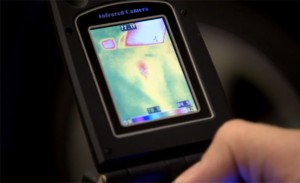Ford is on a roll! According to WardsAuto, Ford is continuing its sales momentum with an 8.1% gain in August on a daily-rate basis, and the outlook for Ford, is looking even better.
With the average age of vehicles on U.S. roads pushing 11 years, the publication says consumers are looking to replace their old cars. In addition, since many have higher mileage vehicles, the option of a new car, truck or SUV can be even more appealing.
“When consumers come in (to dealerships), they have the choice of high-mileage used vehicles or new vehicles with low interest rates,” Ken Czubay, Ford sales chief said. He said that he believes that will help sustain and build momentum of new-vehicle sales.
So, how popular is the Ford lineup? Ford sold 216,017 vehicles in August, with 79% of those deliveries representing retail sales. That is the highest percentage since 2006.
Small vehicles are big! Overall Ford small-car deliveries were up 30%, compared with year-ago with the Fiesta surging 55.7% and Focus rising 3.0%.
Other hot sellers include the Fusion and Explorer. These vehicles posted increases of 9.6% and 8.7%, respectively. The Fusion’s performance marked its best-ever August/
Ford says things could have been even better for the Focus, Fusion and Explorer but there were inventory constraints. There is good news, Ford recently began production of the Fusion at its Flat Rock, MI, assembly plant to boost inventory.
As for the ever-popular Ford F-Series pickup, it was another great month. Sales climbed 18.6%, compared with like-2012, to 66,728 units.
Look at Lincoln
According to WardsAuto, things are looking good for Lincoln’s MKZ. Once again, it was the volume leader with 3,652 deliveries, a 5.8% year-over-year increase. The MKS and Navigator were up 7.3% and 9.3%, respectively.
As you can see, when you buy a Ford, you’re in good company. Hundreds of thousands of savvy consumers agree that Ford and Lincoln have a great lineup that offers power, performance, technology and style. When you’re ready to shop a huge selection, check out www.ReedHasIt.com.
Source: http://wardsauto.com


